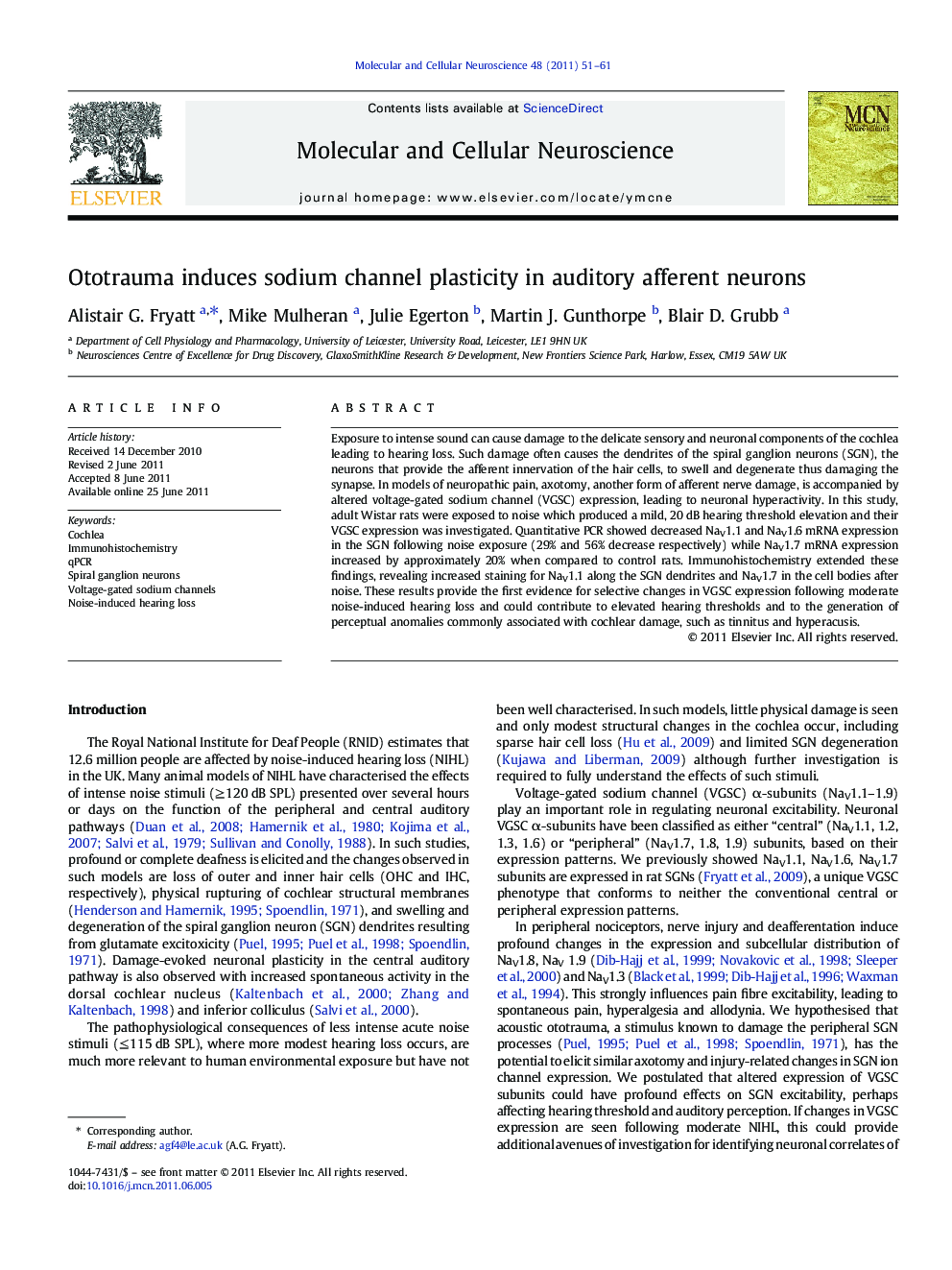| Article ID | Journal | Published Year | Pages | File Type |
|---|---|---|---|---|
| 10956659 | Molecular and Cellular Neuroscience | 2011 | 11 Pages |
Abstract
Exposure to intense sound can cause damage to the delicate sensory and neuronal components of the cochlea leading to hearing loss. Such damage often causes the dendrites of the spiral ganglion neurons (SGN), the neurons that provide the afferent innervation of the hair cells, to swell and degenerate thus damaging the synapse. In models of neuropathic pain, axotomy, another form of afferent nerve damage, is accompanied by altered voltage-gated sodium channel (VGSC) expression, leading to neuronal hyperactivity. In this study, adult Wistar rats were exposed to noise which produced a mild, 20Â dB hearing threshold elevation and their VGSC expression was investigated. Quantitative PCR showed decreased NaV1.1 and NaV1.6 mRNA expression in the SGN following noise exposure (29% and 56% decrease respectively) while NaV1.7 mRNA expression increased by approximately 20% when compared to control rats. Immunohistochemistry extended these findings, revealing increased staining for NaV1.1 along the SGN dendrites and NaV1.7 in the cell bodies after noise. These results provide the first evidence for selective changes in VGSC expression following moderate noise-induced hearing loss and could contribute to elevated hearing thresholds and to the generation of perceptual anomalies commonly associated with cochlear damage, such as tinnitus and hyperacusis.
Keywords
Related Topics
Life Sciences
Biochemistry, Genetics and Molecular Biology
Cell Biology
Authors
Alistair G. Fryatt, Mike Mulheran, Julie Egerton, Martin J. Gunthorpe, Blair D. Grubb,
